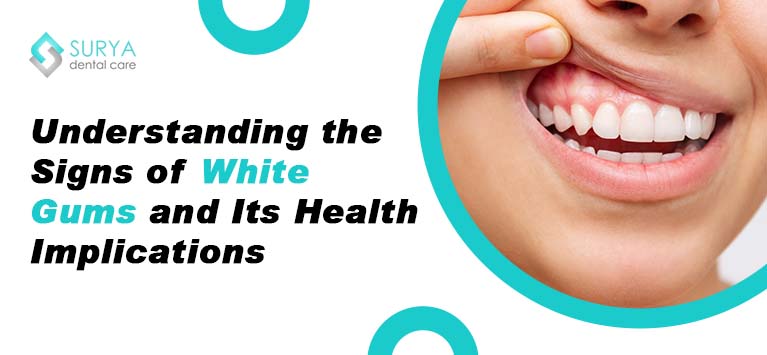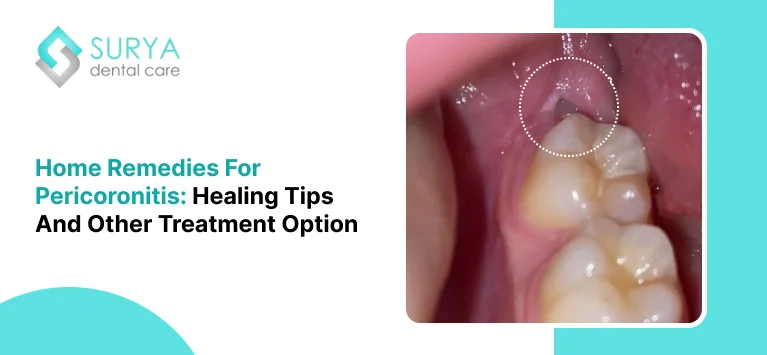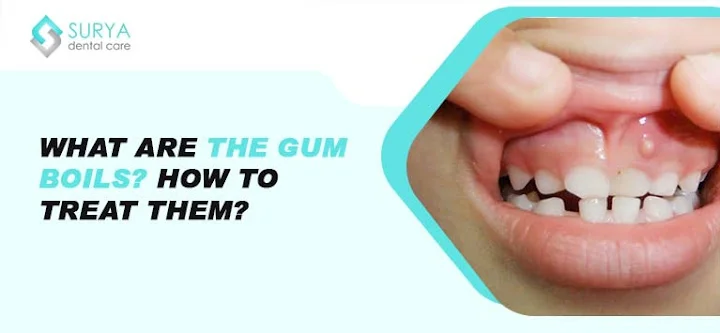Have you ever looked in the mirror and noticed that you have white gums? If the answer is yes, you must pay attention to it. Do you know our gums can tell you much about our overall health? And the change in its color can be an early sign of various health issues. So, check your gums the next time you look in the mirror. They act as health detectives, identifying possible issues. Don’t ignore white gums—they can be a symptom of something serious regarding your health.
In this blog, we’ll talk about the symptoms of white gums. Likewise, we will explore its health implications. Read on to find out more about it in depth.
Why Do I Have White Gums?
Are your gums turning white? Several issues may be the reason you are facing this. It can range from canker sores to chronic inflammatory diseases. In very rare cases, it can suggest oral cancer. If you suffer from this oral gum problem, determine the exact cause. Visit a professional dentist for a proper diagnosis. They can provide a proper diagnosis. It will help you in understanding and addressing the root of the issue.
Here are the nine leading causes of white gums:
1. Poor Oral Hygiene
The most common reason for white gums is poor oral hygiene. Sometimes, plaque and bacteria may form on your teeth and gums. They can cause inflammation and gum discoloration. Brush your teeth twice daily, floss daily, and have regular dental checkups. These easy steps will help you maintain good oral health.
2. Leukoplakia
Leukoplakia is a disorder that affects the mouth. Thick white patches appear on the gums and other regions of the mouth with this condition. The patches can get so dense that they resemble hair.
In addition, the white patches that form are not removable with a toothbrush. While not always dangerous, precancerous cases do exist.
According to the American Cancer Society, patches that appear next to red lesions have a greater chance of becoming cancerous or precancerous.
Doctors are unsure of what exactly causes leukoplakia. Yet, tobacco usage and constant alcohol consumption are the possible causes.
3. Gingivitis
White Gums can also indicate Gingivitis. It is an early stage of gum sickness. Plaque buildup causes this mouth problem. It further results in gum discoloration and inflammation.
Gingivitis leads to inflamed, red, and swollen gums around the base of the teeth. When brushing and flossing, people may notice loose teeth or bleeding.
Gums may turn white and retreat as a result of this sickness. Gingivitis may give rise to more severe kinds of gum disease if left untreated.
4. Canker Sores
Canker Sores, often known as Mouth Ulcers, are Painful Lesions. Ulcers are typically circular or oval. They, too, feature a pale/white core and a red border. These ulcers form inside your cheeks, beneath your tongue, or at the base of your gums. They can be extremely painful, mainly when speaking, eating, or drinking.
If they form at the bottom of your gums, they may cause your gums to appear white. However, They do not modify the gums’ color throughout the mouth.
5. Anemia
White gums may be a sign of Anemia. It is a medical condition due to low red blood cell count. These cells are necessary for carrying oxygen throughout the body. Anemia has a variety of causes. One can be a deficiency in iron or vitamin B-12 in your diet. Other medical issues may furthermore bring it on—for example, inflammatory diseases, like Crohn’s and celiac.
Anemia may generate pallor all over the body, including the gums. Consult your healthcare practitioner if you suspect Anemia for proper diagnosis and treatment.
6. Thrush
Candidiasis, or Oral Thrush, is another name for Thrush. Canadia is the source of this fungal/yeast illness. This infection causes raised creamy-white sores or patches in the mouth. These sores develop inside the cheeks, tongue, or gums.
It is especially likely in people with weak immune systems or taking certain medicines. Oral thrush is more common in babies, adults, and persons with diabetes.
7. Tooth Extraction
Your gums around the tooth may turn white if a dentist extracts a tooth from you. This is due to the surgical procedure’s trauma. A few days following the treatment, your gums should return to their original color.
8. Teeth Whitening
Your gums may turn white after an in-office teeth-whitening procedure. This is a short-term adverse effect of the chemicals used. Within a few hours of the treatment, your gums should have returned to their original color.
9. Oral Cancer
White Gums may point to a more serious issue in a few cases. This oral sickness is Oral Cancer, commonly known as Oral Cavity Cancer. This cancer tends to spread rapidly.
Besides, it can harm your gums, tongue, and the roof of your mouth. Small, flat, and thin lumps may appear around those points. They come in white, red, or flesh tones.
The problem here is that oral cancer may not present any symptoms. This factor can, moreover, contribute to a delayed diagnosis.
Prevention From White Gums
To avoid white gums, take preventative steps. Here are six easy steps to keep your gums in good health:
- Brush your teeth twice daily with fluoride toothpaste, paying particular attention to the gumline.
- Floss every day to remove plaque between teeth and at the gumline.
- Schedule regular checkups for professional cleanings and early diagnosis of problems.
- Eat a nutrient-dense diet high in vitamin C from fruits and vegetables.
- Reduce or quit smoking and moderate alcohol use.
- An allergic reaction to dental products can rarely result in white spots in the mouth. Consumers who use new products that trigger an allergic reaction should cease using them immediately.
Takeaway for White Gums
The treatment of White Gums depends on its root cause. Additionally, it relies on the person’s overall health and how promptly they receive care. You should carefully monitor and go on regular dental checkups to avoid oral problems. These precautions can guarantee that your oral diseases receive early treatment. Early identification can halt the progression of the disease and lessen the risk of complications.
If you have continuous white gums or other symptoms of gum discoloration, seek medical attention. Never ignore possible health problems. Otherwise, it can eventually result in more serious ones.









